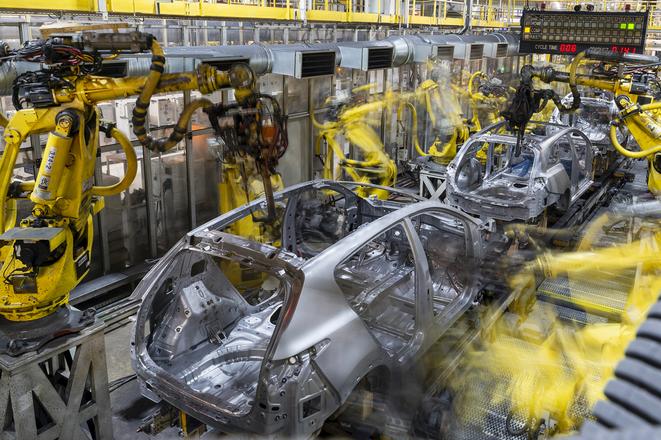With its four car producers, an extensive network of suppliers, and the highest number of manufactured cars per capita, Slovakia remains the global automotive superpower. Even though the Covid-19 pandemic and the consequent global chip shortage curbed its performance, the automotive sector’s main challenge now is not to miss the electromobility train.
Investment Advisory Guide
Well-arranged information about the economy, labour market, investor support, legislation, and real estate as well as investment opportunities in Slovakia. For more details visit ouronline shop.
Two of the country’s carmakers, Volkswagen and Stellantis, are now producing fully electric models of their cars and the Slovak company InoBat Auto is building a battery research and development centre with a pilot production line near Bratislava. Slovakia’s automotive industry is still awaiting greater support from the state in order to gain more electromobility investments.
“The capital goes where it gains support and finds qualified labour,” said Alexander Matušek, chair of the Slovak Automotive Industry Association (ZAP). “But we have to draw on these investments.”
Pandemic’s impacts
Slovakia remains the world’s biggest car manufacturer with 182 cars produced per 1,000 people. After the record year of 2019, when about 1.1 million vehicles rolled off the production lines of Slovak carmakers, the coronavirus-instigated lockdown in 2020 reduced the production to 990,598 vehicles, down 10.6 percent in a year-on-year comparison. In 2021, the global shortage of chips, more than a drop in demand or the closed economy, stopped production lines several times. During the first half of 2021, car production exceeded 555,000 units.
The global chip crisis was caused by a sharp 20-percent shortfall in the production capacity of electronic components worldwide. It has been accompanied by a growing demand in the field of consumer electronics, where the transition to online communication in various areas of life has increased the hunger for electronics, as well as in the automotive industry, where technical systems are added to vehicles to increase safety, comfort, driver and crew awareness, along with entertainment, noted Ján Pribula, secretary general of ZAP.
“The missing capacities cannot be replaced overnight,” said Pribula, citing experts who say that the industry will continue to fight the lack of components in 2022.
Another risk for the sector is the growing prices of steel and non-ferrous metal products. Their increase is attributed not only to the pandemic but also to EU protection regulations. Rising energy prices pose a new risk to the sector.



 Car poduction in Kia Slovakai in Teplička Nad Váhom (source: Courtesy of Kia Motors)
Car poduction in Kia Slovakai in Teplička Nad Váhom (source: Courtesy of Kia Motors)